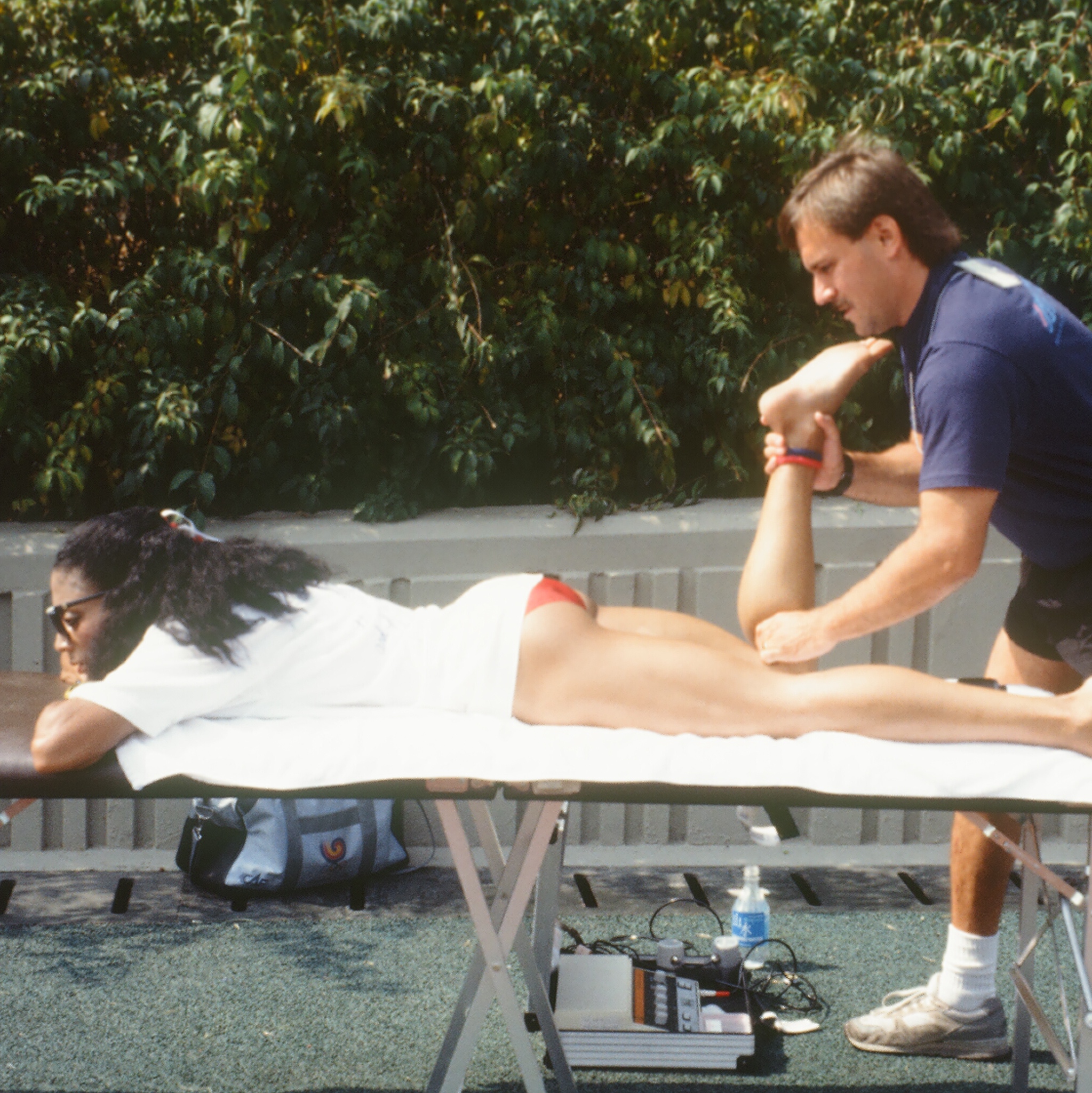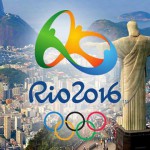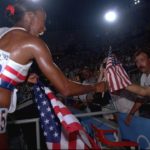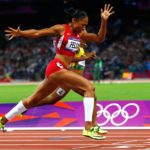AN OLYMPIC PERSPECTIVE
by Robert Forster, PT
Next week I travel to London to help USA athletes achieve their Olympic dreams. And although the 2012 London games mark the fifth time I have been hired to assist U.S. Olympians, I’m still excited by the opportunity to apply the knowledge I’ve accumulated from more than 30 years of experience, to help Team USA compete against the world’s best athletes for the most coveted achievement in all of sports: Olympic Gold! This trip is the latest chapter of a journey that began three decades ago on a short car ride from the Westside of Los Angeles to the San Fernando Valley. In 1981, shortly after arriving in Los Angeles as a new Physical Therapist just out of school, I met a young track coach named Bobby Kersee, and we shared a ride to a speaking engagement. Kersee told me that his goal for his young, college age Track and Field team, was to win a bucket full of medals at the upcoming Games in Los Angeles, Kersee was passionate and convincing, and his certainty so contagious, that I believed him and decided I could help them too. It was a fresh path directly to the reason I had come to Los Angeles. As a former NCAA wrestler whose career was cut short three years earlier by injury, I had just graduated from Physical Therapy School, and immediately moved to Los Angeles to pursue a career in elite sport medicine. As it turns out, Kersee was looking for someone to keep his athletes healthy for the next three years of training and get them to the Olympic starting line at the Los Angeles Coliseum uninjured. He had been searching for someone who understood athletes and the latest scientific prevention and treatment techniques. He figured that it was a tall order considering that several of his athletes would compete in multiple events. He explained the training would have to be extremely arduous just to make the Olympic Team, and then to make it through the multiple heats of Olympic qualifying rounds to get to the finals of each of those events. Although he said it wasn’t going to be easy, I was sold on the challenge before we hit the Sepulveda Pass. Over the next few months, Kersee and I worked together to create a new and sustained level of athlete support previously not seen in athletics at any level. We needed a state of the science approach geared to great performances and longevity for athletes in this most demanding and unforgiving sport events. The strength and conditioning training would not be just for performance, but also include specific techniques for injury prevention to help his athletes withstand the punishing four hour training sessions he doled out. The nutritional support had to be 24/7 not just when coach was around. There would be regular preventative visits to my office where through recovery massage I would discover damage before the athlete even knew there was impending injury. There would be an understanding that when injury did occur in spite of our best efforts, the athletes would be off the track and in the pool to maintain fitness during rehabilitation. My “active rehabilitation” approach upended the passive approach I witnessed at almost all the big meets back then. Time after time I watched in frustration as the best athletes in the world, once injured, were sentenced to lying motionless, wired to little black boxes that would miraculously lead to healing but at best seemed to only serve to temporarily diminish pain. Practitioners with sketchy credentials promised dubious healing powers to desperate athletes who saw their dreams vanishing when injury struck. My professional training taught me that all rehabilitation should be active and all efforts must be focused on returning normal function to the injured area and to re-establishing the total body movement patterns necessary to compete effectively. Stretching, strengthening, specific cross fiber massage techniques to reduce scar tissue and icing were, and are still, the simple but effective treatments that got Bobby’s athletes back into action fast. No need to just address the pain, fix the problem, return function and the pain will go away. I continue to rely on these techniques today for my patients in my private practice and the elite athletes that seek my care. At the Olympic Trials in June 1984 we qualified 7 athletes in eleven events and at the Games two months later they won 10 Olympic medals: Al Joyner Triple Jump Gold, Valerie Brisco Hooks 200m Gold, 400m Gold, 4 x 400m relay Gold, Jeanette Bolden 4 x 100m Relay Gold, Alice Brown 4 x 100m Gold, 100m Silver, Jackie Joyner-Kersee Heptathlon Silver, Greg Foster 100m High Hurdles Silver. But it wasn’t easy. At that time Olympic organizers were focused on putting on the events without embarrassing mishaps and glitches, not the athletes and great athletic performances. The athletes’ personal coaches had little access to their competitors during the Games, and personal Physical Therapists were banned from the warm up area completely. Not willing to delegate our coaching and support responsibilities to an USOC staff member, with little knowledge of the athletes’ personal history and physical condition, we pulled our team out of the Olympic Village and housed them in a local hotel where we could continue to anticipate and serve their every preparation need. For me and my team of therapists, including Tom Lynn, PT, it meant 12 and 15 hour days performing a carefully orchestrated program of physiological support for every workout, every heat and every Olympic final. There were pre-event warm up routines including massage, stretching, specific drills, and visualization techniques for mental preparation. Post workouts and competitions, there was a prescribed cool down on the track, then stretching, more massage and routine icing for recovery. Physical Therapy treatments were conducted into the late hours of every night. The next day it would start all over again, and again, and again for two weeks until every heat and every final for every athlete, in every event was concluded and the medals were collected. When Jackie Joyner-Kersee was injured in one of the 7 events comprising the Heptathlon, our single focus on athlete support was never more evident. Everything else stopped, and all our focus was concentrated on getting to Jackie – but the Olympics officials would have none of it and between us and Jackie was a ten foot high fence and LA’s SWAT team. There was only one thing to do; jump the fence and deal with the SWAT team. After a brief but passionate conversation, they lowered the machine guns pointed at us, and I finally got to Jackie and administered taping techniques needed to get her back on the track for the next event. Over the next few years our comprehensive approach to athlete support was tested further when in 1985 Jackie Joyner-Kersee, in a still amazing feat of national dominance, won all seven events of the Heptathlon at the National Sports Festival in Baton Rouge. In 1986 Jackie broke the World Record in the Heptathlon en route to winning the Festival again and twenty-six days later set another new World Record winning the Goodwill Games in Russia. In 1987 she won the Pan Am Games and then the World Championships in Rome where she won both the Heptathlon and the open Long Jump competition as well. By the time of the 1988 Olympics in Seoul, our approach was perfected as Kersee’s team won more Gold Medals, and broke more world records. After years of lobbying, the Olympic Officials finally began to understand the importance of assisting athletes in any way possible in order to create great performances, and therefore great Olympic Games. Restrictions on personal support were relaxed and I and my staff of three therapists, as well as other athlete support teams, were credentialed. The end justified the means. In Seoul, we were able to provide Jackie with the support she needed to break her own World Record in the Heptathlon as she won the Gold Medal with a score of 7,291 points, which still stands as the world’s best score in these seven events. Five days later she came back and won Gold in the open Long Jump competition and became the first ever to achieve double Gold in these two events and prompting Bruce Jenner, the 1976 Olympic Decathlon Champion, to declare Jackie Joyner-Kersee the greatest track and field athlete of all time, man or woman. Meanwhile her sister in law, Florence Griffith Joyner had a record breaking week as well. Florence had married Jackie’s brother Al, the 1984 Gold medalist in the triple jump, and they became the golden family in Seoul. Florence won Gold medals in the 100m and 200m events breaking the World Record twice, first in the semi-finals and then again in the finals of the latter event. Her record time of 21.34 seconds still stands today. Florence teamed up with Alice Brown and they added two more Golds as members of the 4 x 100m relay while Florence teamed up with Valerie Brisco Hooks in the 4 x 400m relay to add two more Silver Medals to the Kersee team cache of hardware! It was a busy week keeping up with the needs of Team Kersee athletes and we were not done yet. As a final validation to the success of our innovative approach to athlete support our 400m Hurdler, Andre Phillips, defeated the great 2 time Olympic Champion Edwin Moses and won the Gold. His victory and the entire success of Team Kersee marked the passing of the torch to a new generation of scientifically trained and cared for athletes who finally received the support they deserved by Olympic Organizations around the World. At the 1992 Olympics in Barcelona, in spite of many other teams now emulating the athlete support program we pioneered, Team Kersee with Forster and Lynn on hand continued to win. Jackie Joyner-Kersee again won Gold in the Heptathlon, and took a Bronze in the Long Jump. Gail Devers won the 100m Gold, and Janeene Vickers took the Bronze Medal in the 400m hurdles. In Atlanta at the 1996 Games Gail Devers won double Gold in the 100m and 4x100m Relay, while Jackie Joyner-Kersee finished her career with a Bronze Medal in the Long Jump. Following the Atlanta Games I took a hiatus from international travel to raise my son and offer this hard won expertise to local high school athletic teams who have since, using principles honed at the Games, achieved success on the state level in a number of sports. I am fortunate that I’ve also had the opportunity to share the experience gained in the high stakes arena of Olympic competition with other elite athletes including Pete Sampras, Maria Sharapova, and Kobe Bryant. In 2001, I decided to dedicate my career to helping both elite and recreational athletes seeking an ethical edge in competition. I opened Phase IV Scientific Health and Performance Center in Santa Monica to deliver the advanced sports performance science techniques I’ve mastered over the past 30 years to people of all abilities and ages. But for the next few weeks, with my son heading off to college in the fall, it’s a perfect time to re-join Coach Kersee at the 2012 London Olympic Games where once again we will work together to help U.S. athletes Allyson Felix and Dawn Harper and others bring home the Gold!COMPREHENSIVE TRAINING PROGRAMS

Our programs have been honed over 35 years in the results driven world of elite athletics, and with thousands of athletes who have chosen our science based approach to achieving complex performance goals.
PHASE IV offers the most comprehensive science based training and nutrition programs available anywhere! We make you better, and keep you healthy and competing longer. If you are interested in improving your performance, and preventing injury, we will design a periodized daily training plan for you, complete with nutritional optimization, as well as strength and flexibility training.
Pictured here is CEO Robert Forster, PT and Florence Griffith Joyner “Flo-Jo” The fastest sprinter of all time.








